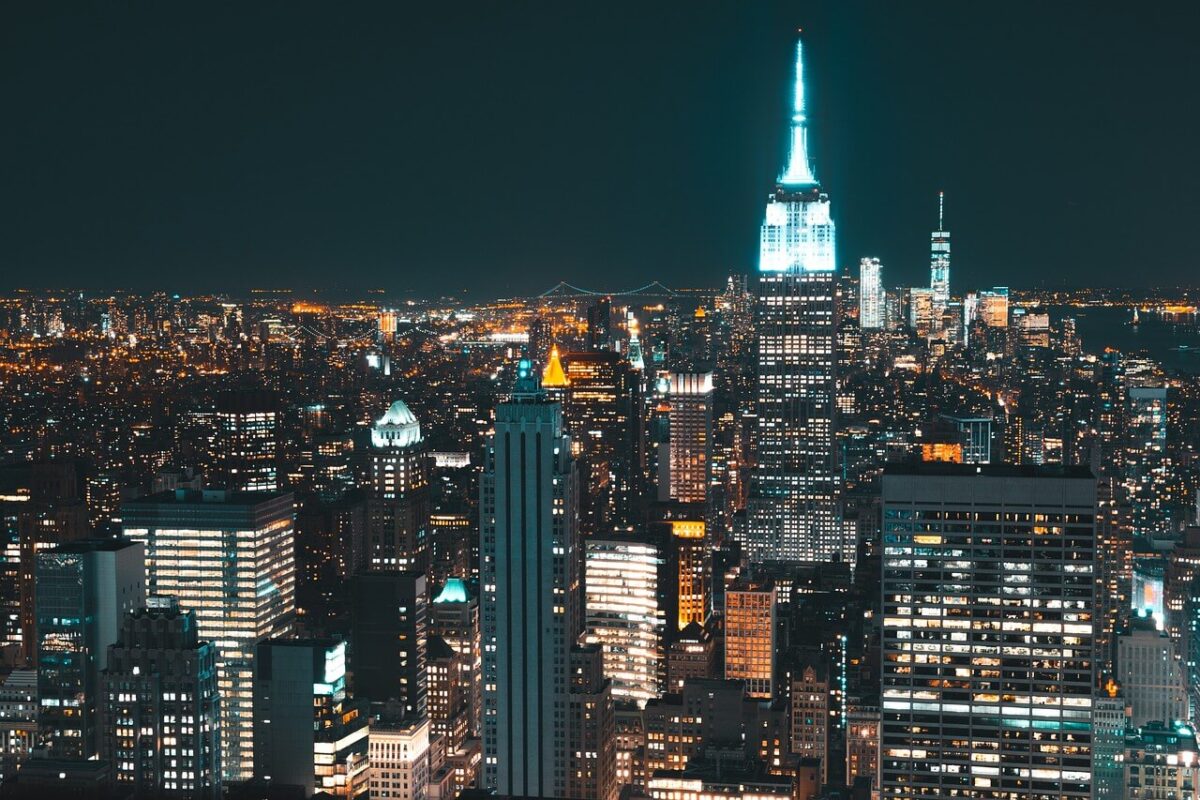Top 10 places in New York City. You mean more like top 100 places, right?
I know. I know.
The honorable mention list could probably be longer that the post itself.
So, OK. Let’s make it about Manhattan and I promise I will come back with part two.
New York, New York
New York City, affectionately known as the Big Apple, is an electrifying marvel that truly never sleeps.
Picture this: towering skyscrapers reaching for the heavens, yellow cabs zipping through bustling streets, and an incredible mosaic of neighborhoods, each with its own heartbeat.
From its humble beginnings as New Amsterdam to becoming the global icon it is today, NYC is a testimony to dreams and ambition.
Dive into the historic streets where modernity meets legacy, from the majestic Empire State Building to the neon glow of Times Square.
Central Park’s green expanses offer a tranquil escape, while museums like the MoMA showcase world-class artistry.
Whether it’s the scent of street-side delis or the echo of Broadway’s melodies, New York’s charm is as diverse as its people.
So, get ready to immerse yourself in the never-ending adventure that is New York, the city that always has more to discover!
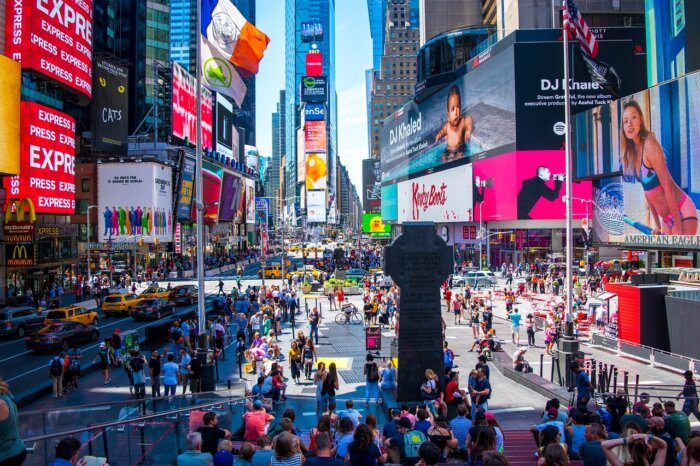
My top 10 places to see in New York City
In alphabetical order.
Broadway and the Theatre District
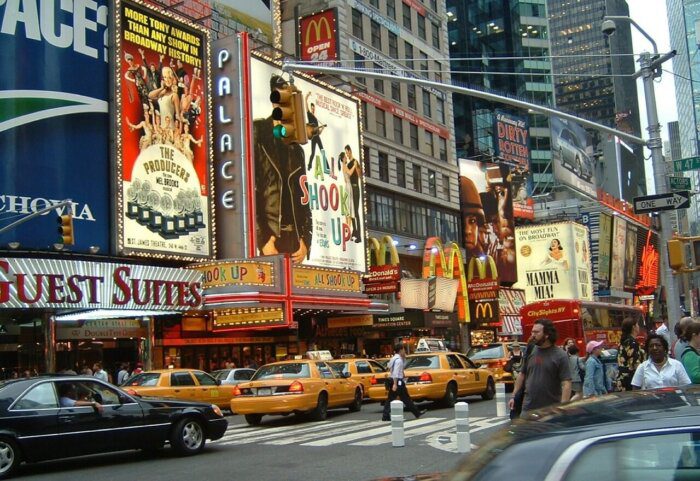
Did you know…?
Surprisingly, Broadway’s Theatre District wasn’t always the dazzling hub of entertainment it is today.
In the early 1900s, the epicenter of New York theatre was miles away, around Union Square.
Broadway only began to shine in the 1920s when Times Square transformed into a theatre paradise.
This shift was sparked by New York’s rapid expansion and the advent of electric lighting, which turned Broadway into a glowing beacon for night-time entertainment.
Historical theatres like the Winter Garden, the New Amsterdam, and the Shubert, all established during this era, are still active today, weaving the rich tapestry of Broadway’s past into its present.
Knowing this history adds depth to every performance, as each theatre holds stories of a bygone era, connecting audiences across time.
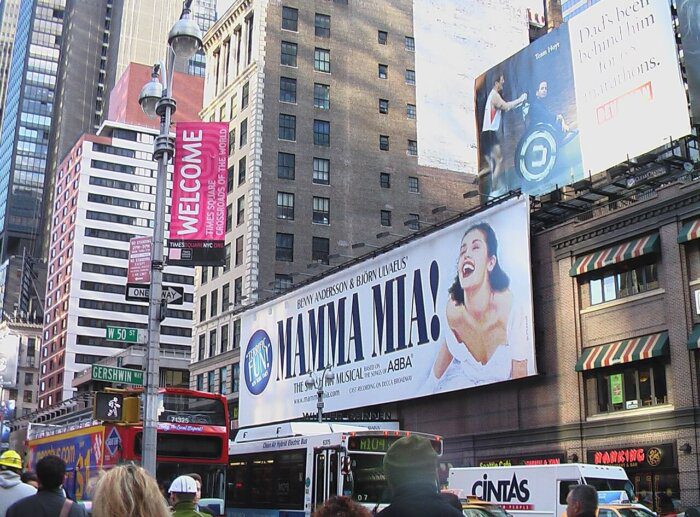
What is Broadway and the Theatre District and why see it?
Broadway and the Theater District, featuring over 40 professional theaters, form the heart of New York’s performing arts scene, pulsing with energy and creativity.
Each venue offers a unique experience, from grand, historic playhouses to intimate, modern stages.
Broadway shows, renowned for their high-caliber performances, range from timeless classics to cutting-edge new works.
The district buzzes with life, illuminated by dazzling marquees and vibrant crowds.
Here, the arts come alive, blending drama, music, and dance in unforgettable performances.
The Theater District also offers a rich cultural experience, with a variety of nearby restaurants, shops, and landmarks.
It’s a place where dreams take the stage, making it a must-visit for anyone seeking the magic of live theater.
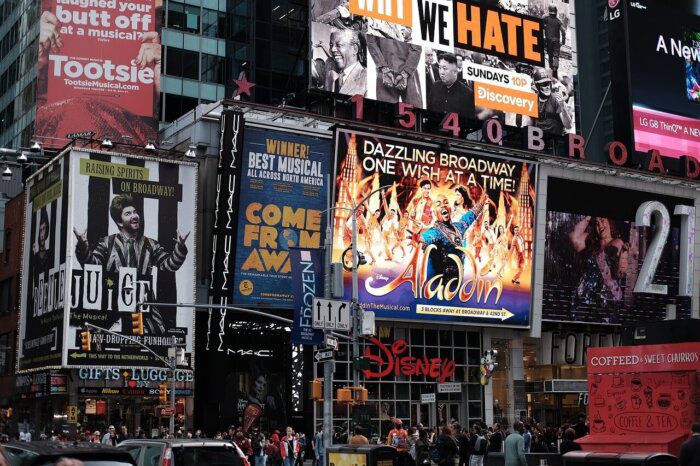
How to enjoy Broadway and the Theater District?
The Theater District, Broadway’s vibrant heart, is centrally located in Midtown Manhattan.
Easily accessible, it stretches from West 40th to West 54th Streets and between Sixth and Eighth Avenues.
To get there, tourists can take the subway, with the Times Square-42nd Street station being the most convenient stop.
For the best experience, visitors should book tickets in advance, as popular shows sell out quickly.
It’s wise to arrive early to avoid the rush and soak in the ambiance.
Be mindful of the theater etiquette – no recording, and keep noise to a minimum.
With so many dining options nearby, plan for a pre-show meal or a post-show drink to complete the Broadway experience.
More information: Broadway shows website
Brooklyn Bridge
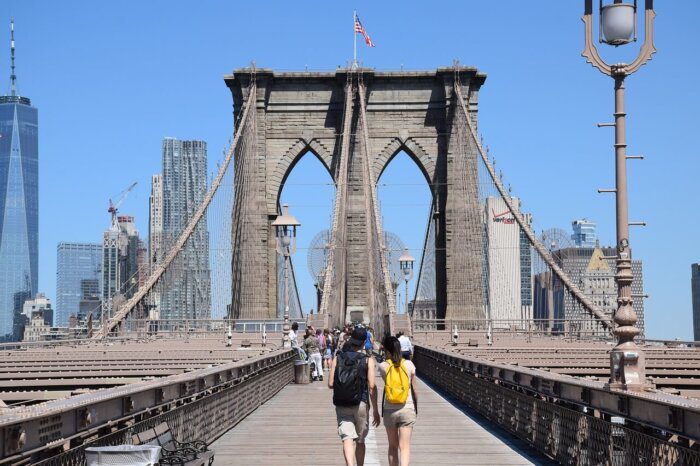
Did you know…?
An intriguing, lesser-known fact about the Brooklyn Bridge is its connection to a health craze in the 1880s.
After its opening, a rumor spread that the bridge was unstable, causing a stampede that led to several injuries.
To restore public confidence, P.T. Barnum, the famous showman, paraded 21 elephants across it in 1884.
This spectacle, led by the renowned Jumbo, demonstrated the bridge’s strength and stability.
Today, this quirky historical tidbit adds a unique flavor to the bridge’s story, captivating visitors.
As tourists walk across, they can imagine the extraordinary sight of elephants on this engineering marvel, adding a touch of whimsy to their journey.
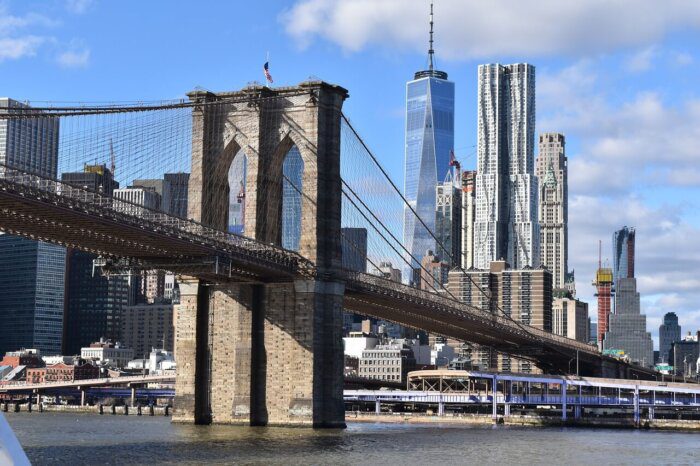
What is Brooklyn Bridge and why see it?
The Brooklyn Bridge, an iconic symbol of New York, connects Manhattan and Brooklyn over the East River.
Opened in 1883, it stands as one of the oldest suspension bridges in the United States.
This engineering marvel spans about 1,600 feet (488 meters) and impresses with its distinctive Gothic arches and crisscrossing cables.
The bridge offers a pedestrian walkway above the bustling traffic, providing stunning views of the city skyline and the Statue of Liberty.
Its architectural beauty and historical significance make it a must-visit.
Photographers and sightseers alike cherish the bridge for its picturesque views.
Walking across it gives a sense of the grandeur and history of New York City.
The Brooklyn Bridge is not just a means of transport; it’s a journey through New York’s rich past and dynamic present.
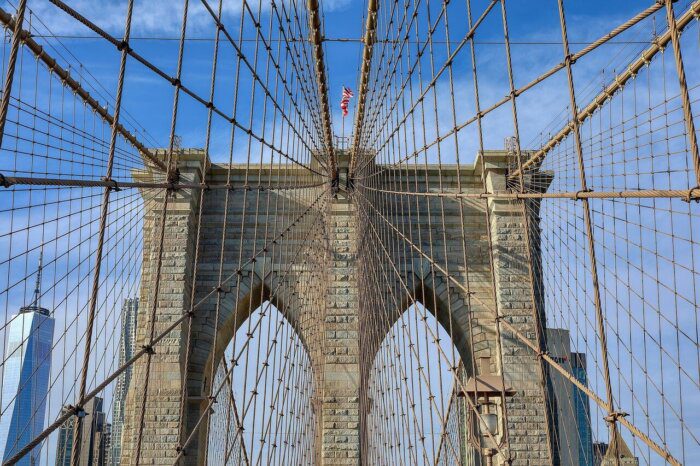
How to enjoy Brooklyn Bridge?
The Brooklyn Bridge connects Lower Manhattan and Brooklyn, easily accessible from both boroughs.
For Manhattan access, take the 4, 5, or 6 subway lines to Brooklyn Bridge-City Hall Station.
From Brooklyn, the A or C lines to High Street-Brooklyn Bridge Station are your best bet.
Walking the bridge offers breathtaking city views, so bring a camera.
Start early to avoid crowds and enjoy a more peaceful experience.
Comfortable shoes are essential for the 1.1-mile (1.8-kilometer) walk.
Stay on the pedestrian path, as the bike lane is busy and fast-moving.
Along the way, informative plaques offer historical insights, enriching your walk.
Remember, the weather can change quickly, so dress in layers.
This iconic journey is a must-do for its unique blend of history, architecture, and stunning urban views.
Central Park
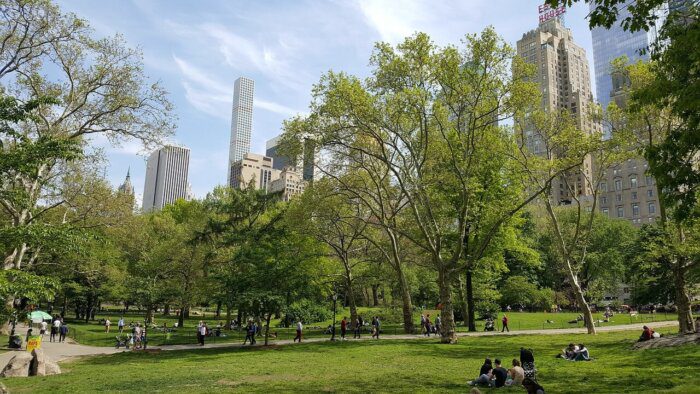
Did you know…?
Central Park boasts a charming secret known to few: a miniature castle perched atop Vista Rock.
Belvedere Castle, designed in 1869, offers panoramic views of the park and the city skyline.
Originally intended as a Victorian folly, it now houses a nature observatory and visitor center.
This fairy-tale structure, with its lookout towers and flag, seems straight out of a storybook.
The castle’s name, ‘Belvedere’, means ‘beautiful view’ in Italian, aptly describing the breathtaking scenery it overlooks.
Visitors can explore its terraces and enjoy sights of the Great Lawn and the Ramble.
The presence of Belvedere Castle adds a touch of whimsy to Central Park, offering a delightful surprise to those who discover it.
Its blend of nature, architecture, and history makes the castle a hidden jewel in the park’s crown, enchanting visitors with its unique charm.
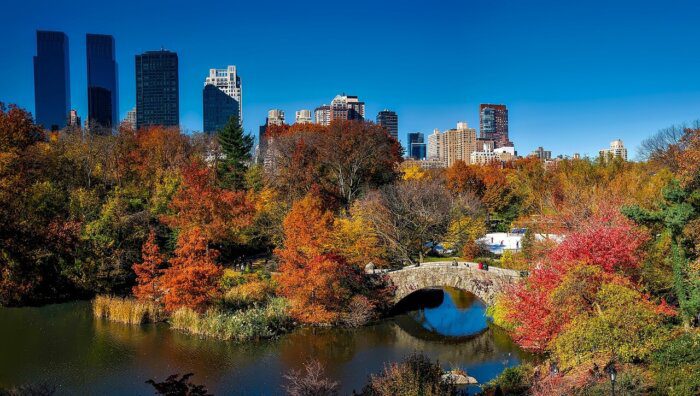
What is Central Park and why see it?
Central Park, an urban oasis in the heart of New York City, stretches over 843 acres (341 hectares).
It is a masterpiece of landscape architecture, blending natural and man-made elements.
The park features sprawling meadows, serene lakes, and winding pathways. Iconic attractions include the Bethesda Terrace, Strawberry Fields, and the Central Park Zoo.
For art and history enthusiasts, numerous statues and monuments dot the landscape.
The park also offers a variety of recreational activities, from boating and biking to ice skating in the winter.
Central Park serves as a green lung for the city, providing a peaceful escape from urban hustle.
Its design encourages exploration and relaxation, making it a must-visit for both locals and tourists.
The park’s beauty changes with the seasons, offering a unique experience each time you visit.
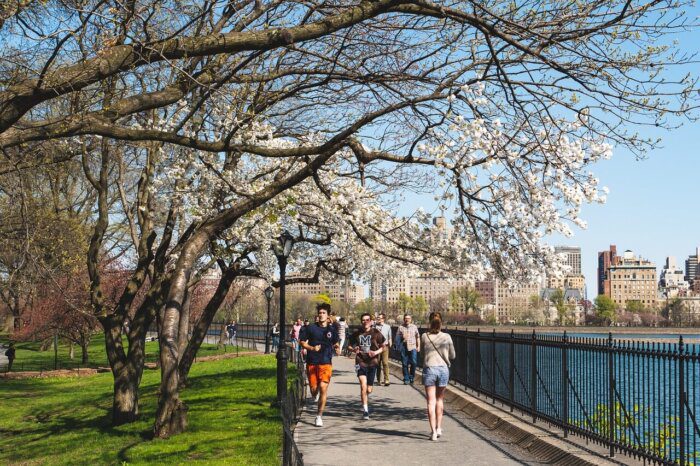
How to enjoy Central Park?
Central Park lies in the heart of Manhattan, stretching from 59th Street to 110th Street between Fifth and Eighth Avenues.
To get there, visitors can take numerous subway lines; the A, B, C, D, 1, N, R, and Q trains all stop near the park’s perimeter.
Key entry points include Columbus Circle at the southwest corner and the Grand Army Plaza at the southeast.
For an enriching experience, wear comfortable shoes for walking, carry water, and bring a map of the park.
The park is vast, so plan which areas you want to explore.
Be mindful of the weather, as the park’s experience can vary greatly between sunny and rainy days.
Remember, some attractions within the park may have specific hours or require tickets, like the Central Park Zoo.
Most importantly, take time to relax and absorb the natural beauty amidst the city’s bustle.
More information: Central Park website
Chinatown and Little Italy
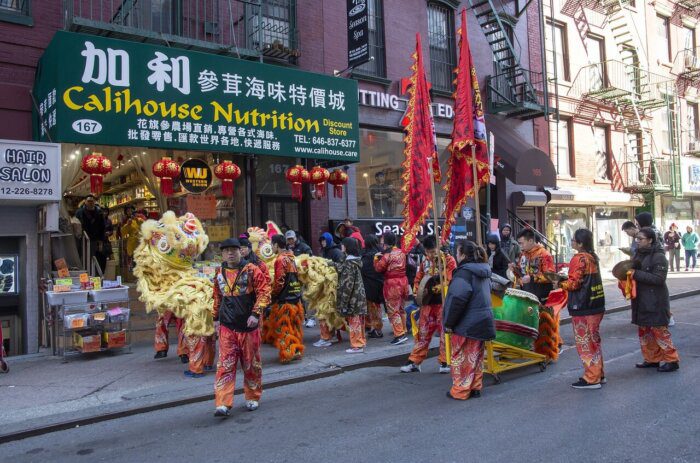
Did you know…?
A captivating fact about New York’s Chinatown and Little Italy is their secret network of underground tunnels.
Historically, these tunnels were used for various purposes, from smuggling goods during Prohibition to serving as hideouts for gang members.
Today, while most of these passageways are sealed or inaccessible, their existence adds a mysterious layer to the neighborhoods.
As you stroll through the bustling streets, sampling delicious cuisines and absorbing the vibrant cultures, you’re also walking above a hidden world that once played a crucial role in the area’s history.
This lesser-known aspect of Chinatown and Little Italy invites visitors to ponder the intriguing stories and secrets that lie beneath the surface of these iconic New York neighborhoods, enhancing the sense of adventure and discovery.
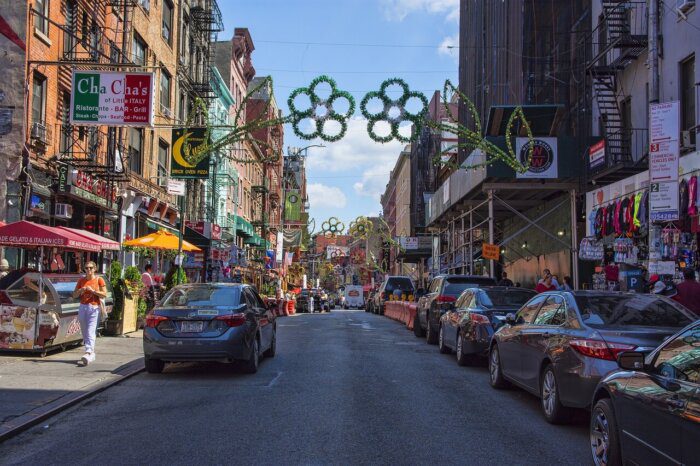
What are Chinatown and Little Italy and why see them?
Chinatown and Little Italy are vibrant neighborhoods in Lower Manhattan, renowned for their rich cultural heritage.
Chinatown, one of the largest enclaves of Chinese culture outside Asia, bustles with colorful shops, authentic eateries, and street vendors selling a variety of Asian goods.
The area’s narrow streets and unique architecture transport visitors to the Far East.
Little Italy, though smaller than it once was, still maintains its charming Italian ambiance with traditional restaurants, gelato stands, and bakeries lining Mulberry Street.
The neighborhood exudes a warm, welcoming atmosphere, especially during festivals like the Feast of San Gennaro.
These adjacent neighborhoods offer a fascinating blend of cultures, making them a must-visit for their diverse culinary offerings, unique shopping experiences, and rich history.
Walking through Chinatown and Little Italy is like taking a quick trip around the world, right in the heart of New York City.
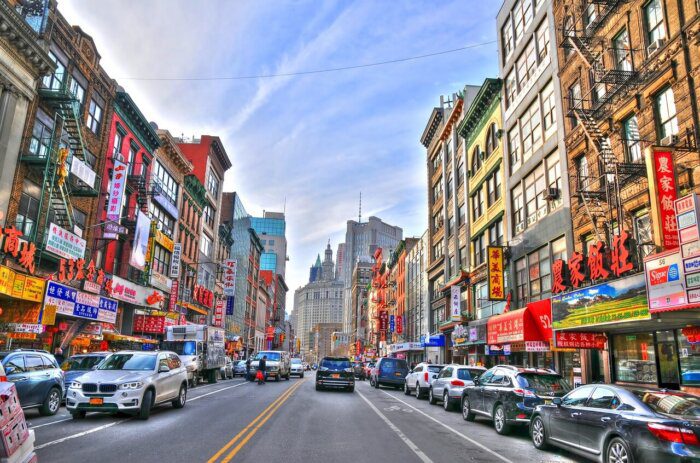
How to enjoy Chinatown and Little Italy?
Chinatown and Little Italy nestle in Lower Manhattan, easily accessible by public transport.
The best subway stops for Chinatown are Canal Street on the N, Q, R, W, J, Z, 6 lines, and Grand Street on the B and D lines.
For Little Italy, the Canal Street station on the N, Q, R, W, and 6 lines is also convenient.
Keep cash handy, as some smaller shops and eateries don’t accept cards.
Be prepared for crowds, especially during festivals or weekends.
Explore beyond the main streets to discover hidden gems.
Sample the diverse cuisine, but also take time to appreciate the history and culture through landmarks and street art.
Remember, bargaining is common in Chinatown’s markets, so don’t hesitate to negotiate prices.
These vibrant neighborhoods offer a sensory journey, blending the sights, sounds, and tastes of two distinct cultures in one dynamic area.
More information: Chinatown website
Empire State Building
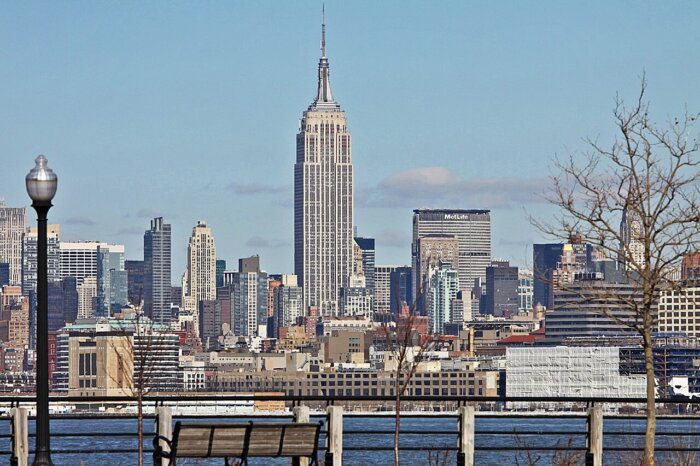
Did you know…?
One lesser-known aspect of the Empire State Building is its secret 103rd floor.
This floor is not open to the general public and is known for its narrow outdoor platform with a low parapet.
Originally designed as a disembarkation floor for airships, it offers a unique, almost bird’s-eye view of the city.
While the airship docking idea never materialized, the 103rd floor remains a hidden gem, occasionally accessible to VIP guests and special tours.
This exclusive level of the building adds an element of intrigue and exclusivity to an already fascinating structure.
Visitors to the observation decks on the 86th and 102nd floors can only imagine the even more breathtaking views from this secretive upper tier.
This hidden floor underscores the Empire State Building’s blend of history, innovation, and a touch of the extraordinary.
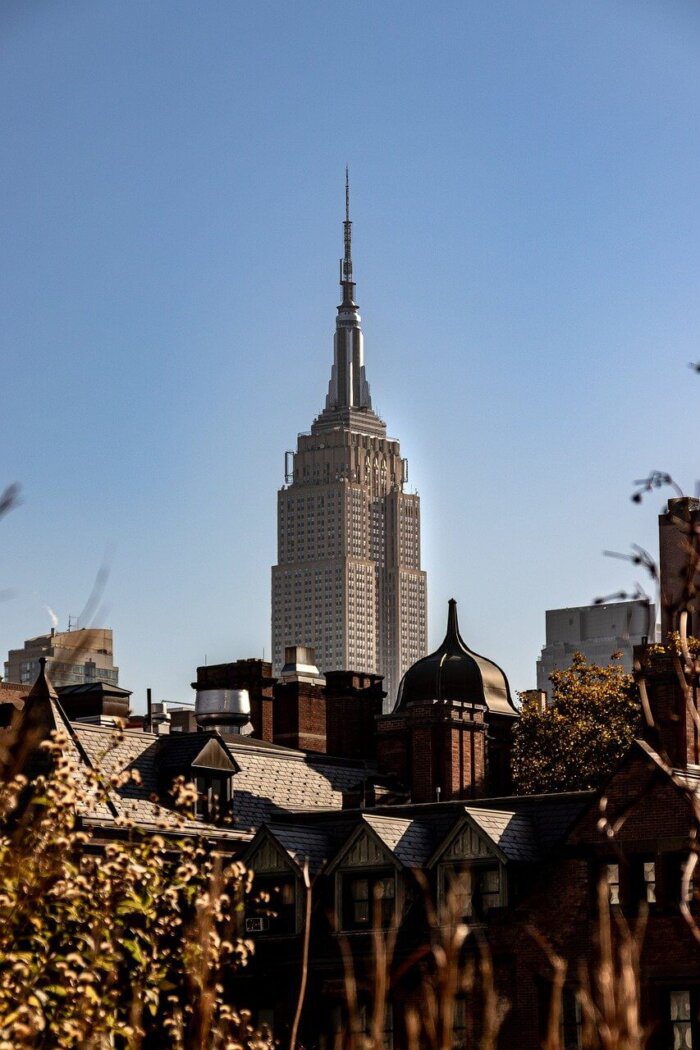
What is Empire State Building and why see it?
The Empire State Building, an iconic New York City landmark, towers over Midtown Manhattan at 1,454 feet (443 meters) tall.
Completed in 1931, it held the title of the world’s tallest building for nearly 40 years.
This Art Deco masterpiece boasts 102 floors, with the 86th and 102nd floors housing famous observation decks.
From these vantage points, visitors enjoy breathtaking 360-degree views of the city.
The building’s distinctive silhouette makes it a key feature of the city’s skyline.
At night, its top lights up in various colors, often to mark holidays and events.
Inside, the recently renovated lobby, with its stunning murals, is a testament to 1930s elegance.
The Empire State Building is not just an architectural wonder; it’s a symbol of American ingenuity and ambition.
A visit here offers a step back in history while experiencing awe-inspiring views, making it a must-see for anyone in New York City.
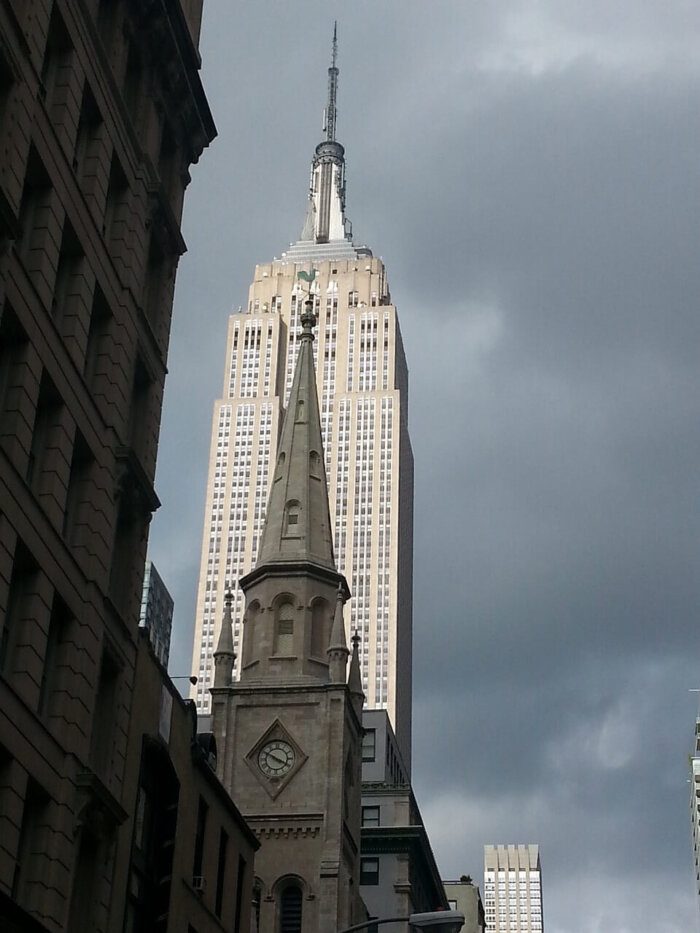
How to enjoy Empire State Building?
The Empire State Building stands at 350 Fifth Avenue, in the heart of Midtown Manhattan.
To get there, visitors can take the B, D, F, M, N, Q, R, or W subway lines to the 34th Street-Herald Square station, just a short walk away.
The building opens daily, with extended hours for its observation decks.
Purchasing tickets in advance online can save time and often offers discounts.
For the best views, visit on a clear day; early morning or late evening times tend to be less crowded.
Remember, security checks are mandatory, so pack light.
The audio tour available with admission enhances the experience, providing historical insights.
Finally, dress comfortably and be prepared for potential wind on the observation decks, especially if visiting in cooler months.
This iconic visit offers a blend of architectural marvel, historical journey, and unparalleled city views.
More information: Empire State Building website
Grand Central Terminal
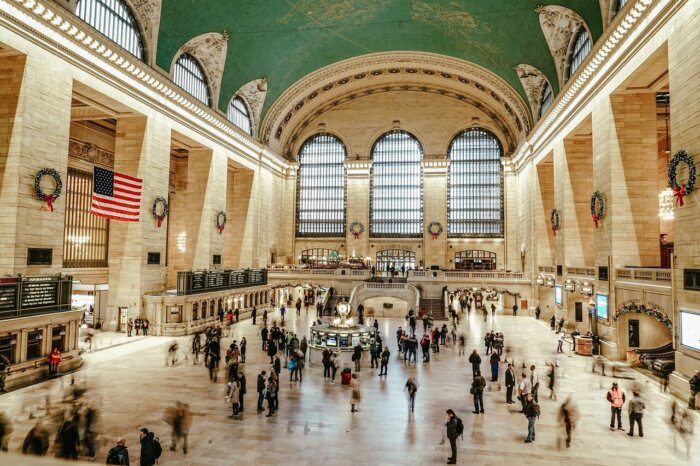
Did you know…?
A captivating secret of Grand Central Terminal is its “Whispering Gallery.”
Located near the famous Oyster Bar, this unassuming archway holds a unique acoustic property.
When two people stand at diagonal corners of the arch and whisper, the sound remarkably travels across the curve of the ceiling, allowing them to hear each other clearly despite the distance.
This architectural marvel is a delightful surprise to many visitors, who often stumble upon it while exploring the terminal.
It’s a favorite spot for both romantic exchanges and playful messages.
Beyond its practical function as a transportation hub, Grand Central’s Whispering Gallery adds an element of magic and intimacy, making it a must-visit spot within this historic landmark.
Discovering this hidden acoustic wonder offers a moment of wonder in the midst of the bustling terminal, creating a memorable experience for those in the know.
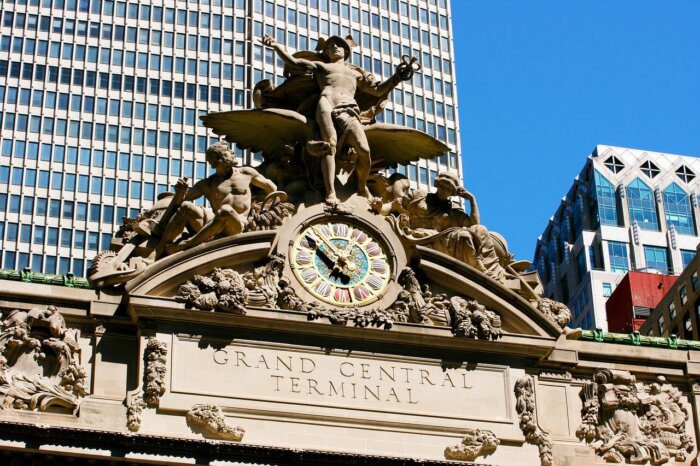
What is Grand Central Terminal and why see it?
Grand Central Terminal, a New York City landmark, stands as a marvel of both architecture and function.
This bustling transportation hub connects travelers through its numerous train and subway lines.
Opened in 1913, the terminal is renowned for its grand Beaux-Arts design, featuring an opulent main concourse with a stunning celestial ceiling.
The four-faced opal clock atop the information booth is a world-famous meeting point.
Beyond its role as a transit center, Grand Central hosts fine dining establishments, casual eateries, and unique shops, making it a destination in itself.
The terminal also offers guided tours revealing its rich history and architectural secrets.
Its blend of elegance, history, and functionality makes Grand Central Terminal a must-visit for anyone wanting to experience the essence of New York’s bustling charm.
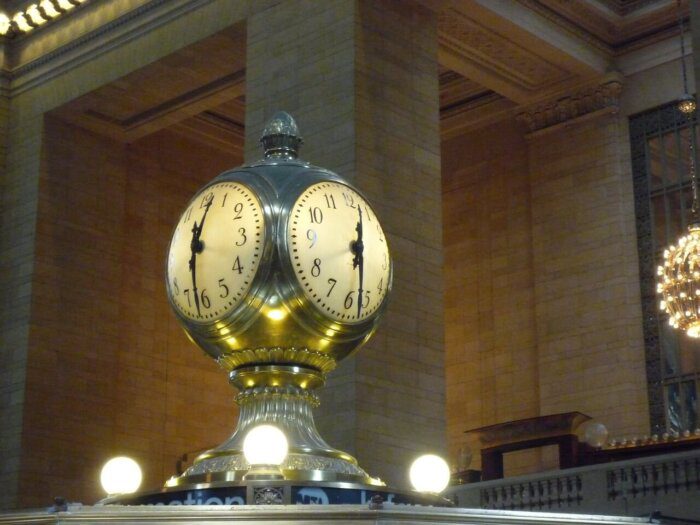
How to enjoy Grand Central Terminal?
Grand Central Terminal is at 89 E. 42nd Street at Park Avenue, in the heart of Midtown Manhattan.
It’s easily accessible by various subway lines: the 4, 5, 6, 7, and S (Shuttle) trains all stop at Grand Central-42nd Street station.
For those coming from other parts of the city, many city buses stop nearby.
Visitors should be aware of the terminal’s vastness.
It helps to have a map or use a smartphone app to navigate.
Exploring the main concourse, don’t miss the iconic information booth with its four-faced clock, a popular meeting spot.
Check out the Whispering Gallery and the celestial ceiling, and allow time for some shopping or dining in the terminal’s many stores and restaurants.
Enjoying Grand Central’s architectural beauty and vibrant atmosphere offers a glimpse into New York City’s dynamic pulse.
More information: Grand Central Terminal website
New York City Museums
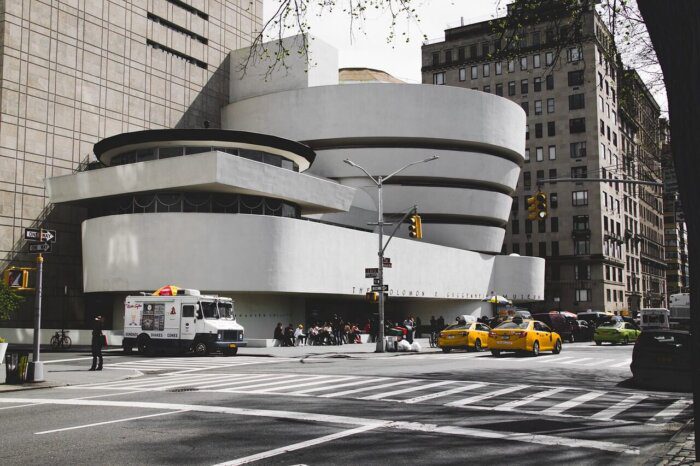
Did you know…?
A fascinating fact about New York City’s museums is their ‘pay-what-you-wish’ policy on certain days.
Many of the city’s prestigious museums, including the Metropolitan Museum of Art and the American Museum of Natural History, offer this option.
On these special days, visitors can pay any amount for admission, making world-class art and history accessible to all.
This initiative reflects the city’s commitment to making cultural education inclusive.
Tourists can experience the rich diversity of exhibits without the constraint of standard ticket prices.
It’s a delightful opportunity for visitors to explore collections ranging from ancient artifacts to modern art at their own pace and budget.
This policy enriches the museum-going experience in New York, making it a must-do activity for anyone interested in culture and history.
Knowing this fact allows visitors to plan their itinerary to maximize their cultural exploration in an affordable way.
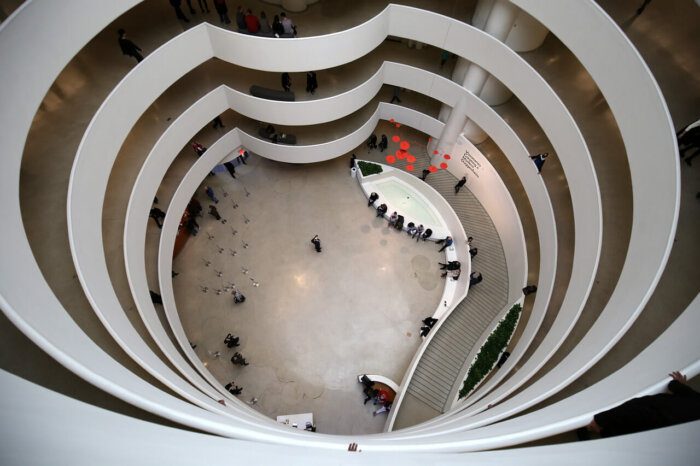
What is it about New York City Museums and why see them?
New York City’s museums are world-renowned, offering a diverse array of cultural and educational experiences.
The Metropolitan Museum of Art, one of the largest art museums in the world, houses over two million works spanning 5,000 years.
The Museum of Modern Art (MoMA) showcases influential modern and contemporary art, including works by Van Gogh and Picasso.
For history enthusiasts, the American Museum of Natural History offers a journey through time with its vast collection of artifacts and exhibits on human culture and the natural world.
The Whitney Museum of American Art focuses on American art, with a special emphasis on living artists.
The Guggenheim, known for its unique spiral architecture, features impressive collections of Impressionist, Post-Impressionist, and early Modern art.
Each museum in New York offers its own unique perspective, making them special for their depth, diversity, and ability to engage visitors of all interests.
Whether it’s ancient relics or cutting-edge art, these museums provide unforgettable experiences, making them a must-visit for anyone exploring New York City.
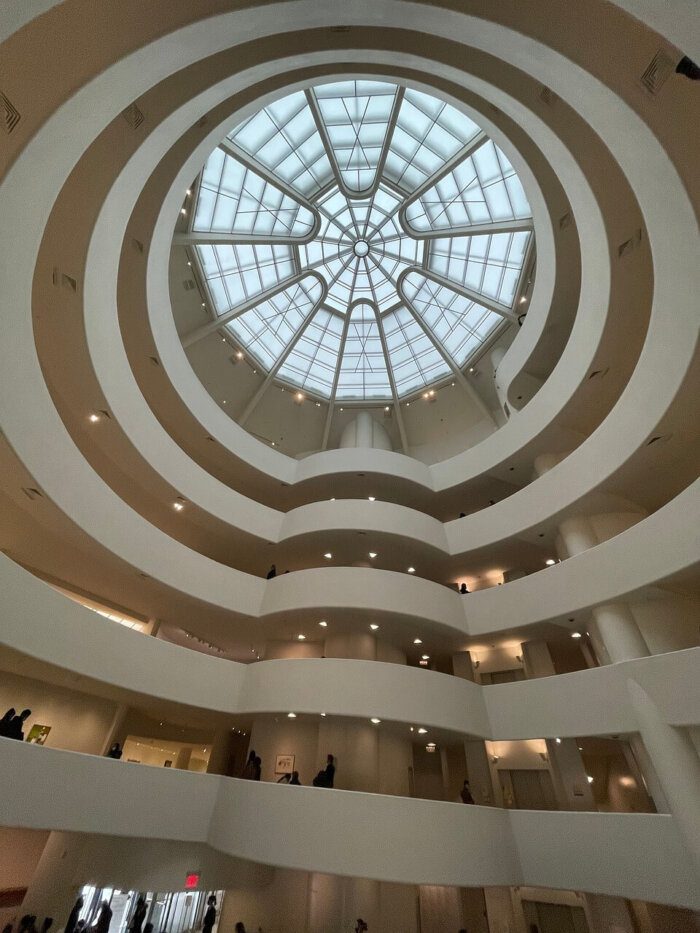
How to enjoy New York City Museums?
When visiting New York City’s museums, tourists should check each museum’s schedule for special exhibitions and ‘pay-what-you-wish’ hours.
Many museums offer these hours weekly, making visits more affordable.
Purchasing tickets online often saves time and guarantees entry, especially for popular exhibits.
Each museum has its own photography policy, so familiarize yourself with these rules beforehand.
To enhance your experience, consider audio guides or joining a guided tour, often available for a small fee.
Lastly, while immersing yourself in the art and history, be respectful of the exhibits and other visitors, ensuring a pleasant experience for everyone.
With these tips in mind, you’ll maximize your enjoyment and appreciation of New York City’s world-class museums.
More information: Guggenheim Museum, Museum of Modern Art (MoMA), American Museum of Natural History
Times Square
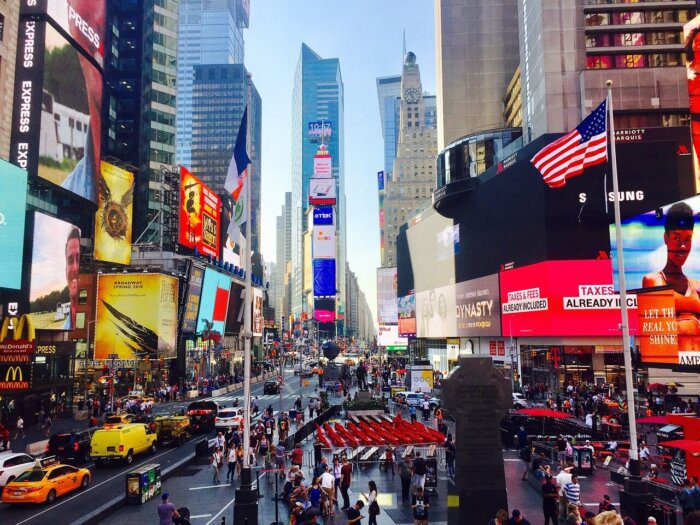
Did you know…?
A lesser-known yet intriguing aspect of Times Square is its New Year’s Eve Wishing Wall.
Each year, visitors from around the world write their wishes for the new year on colorful pieces of confetti.
This confetti is then released into the air at midnight during the famous New Year’s Eve celebration.
Hidden in plain sight, the Wishing Wall is a heartwarming tradition, symbolizing hope and dreams for the future.
It turns Times Square, often seen as a commercial hub, into a space of personal reflection and shared aspirations.
Many visitors are unaware of this opportunity to leave a piece of themselves in one of the world’s most iconic celebrations.
Discovering and participating in this tradition adds a personal and meaningful touch to the Times Square experience, especially for those visiting during the holiday season.
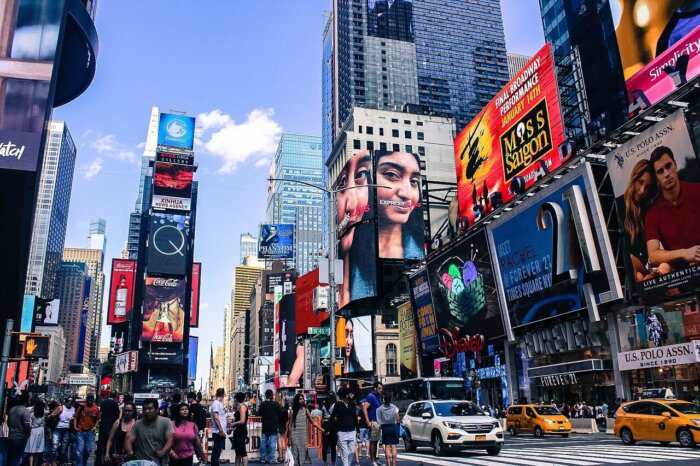
What is Times Square and why see it?
Times Square, located in the heart of Manhattan, is an iconic symbol of New York City’s vibrant energy.
Known as “The Crossroads of the World,” this bustling area is famous for its bright, flashing billboards and massive digital screens.
Home to the annual New Year’s Eve ball drop, Times Square attracts millions of visitors each year.
The square’s electric atmosphere comes alive with street performers, bustling crowds, and an abundance of shopping and dining options.
Theaters on Broadway, just a stone’s throw away, offer world-class entertainment.
Times Square is also a hub for major television broadcasts and events, adding to its allure as a center of global media.
This colorful and lively district offers an unforgettable sensory experience, making it a must-visit destination for anyone wanting to feel the pulse of New York City.
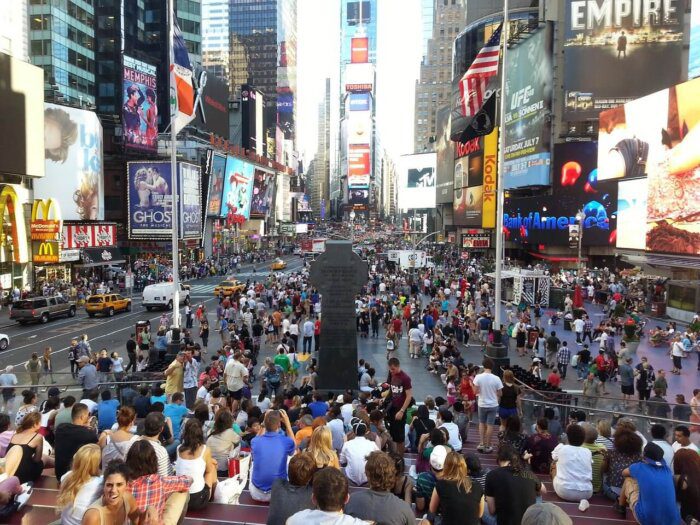
How to enjoy Times Square?
Times Square is in the heart of Midtown Manhattan, at the junction of Broadway and Seventh Avenue, stretching from West 42nd to West 47th Streets.
The easiest way to get there is by subway; the 1, 2, 3, 7, N, Q, R, and W trains all stop at 42nd Street-Times Square.
When visiting, be aware of the large crowds, especially during evenings and weekends.
Stay vigilant of your belongings, as the area can attract pickpockets.
For the best experience, explore both during the day and at night to see the famous lights and billboards in all their glory.
Remember, many street performers and costumed characters will expect a tip if you take photos with them.
Times Square’s vibrant atmosphere and iconic status make it a must-see, offering a true taste of the energy and excitement of New York City.
More information: Times Square website
Wall Street and the Financial District
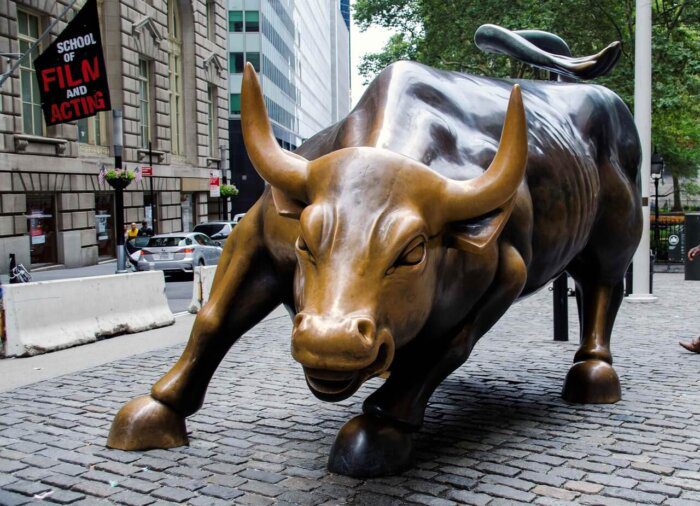
Did you know…?
A fascinating, lesser-known fact about Wall Street and the Financial District is the existence of a hidden residential enclave, Stone Street.
This small, historic street, nestled among towering skyscrapers, is one of the oldest in New York.
Cobblestone paved and lined with quaint buildings, Stone Street has a charming, old-world feel that contrasts sharply with the modern financial hub surrounding it.
Today, it’s a lively spot filled with restaurants and bars, offering a cozy retreat from the hustle of the financial world.
Many visitors and even locals are unaware of this hidden gem, making its discovery a delightful surprise.
Walking down Stone Street, visitors can experience a slice of New York’s colonial past, providing a unique, peaceful escape amidst the city’s financial heartbeat.
This hidden historical street adds an unexpected dimension to the Financial District, enriching the experience of those who explore its depths.
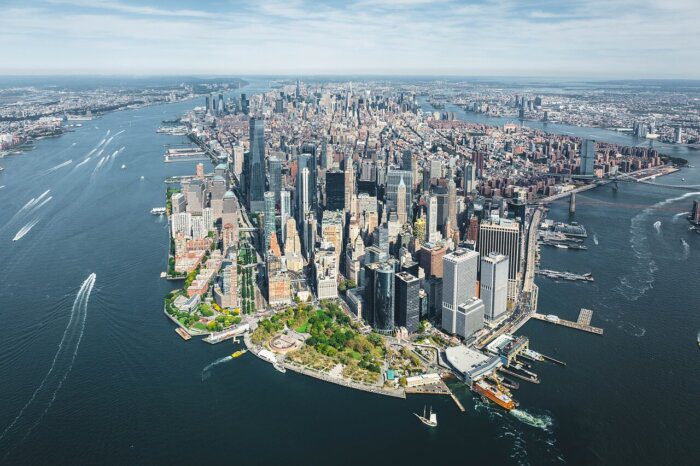
What is Wall Street and the Financial District and why see them?
Wall Street and the Financial District in Lower Manhattan represent the heart of the global finance industry.
Wall Street, a mere eight-block stretch, is home to the New York Stock Exchange and the Federal Reserve Bank.
The area buzzes with the energy of finance professionals and tourists alike.
Iconic buildings like the Charging Bull sculpture and the Fearless Girl statue symbolize financial optimism and resilience.
The narrow streets, lined with skyscrapers, exude a sense of power and influence.
Beyond finance, the district offers historical sites like Trinity Church and the 9/11 Memorial.
The area also includes Battery Park, offering stunning views of the Statue of Liberty and Ellis Island.
This combination of financial clout, historical significance, and architectural marvels makes Wall Street and the Financial District a compelling visit.
They offer a unique glimpse into the workings of global finance while providing a rich tapestry of American history and culture.
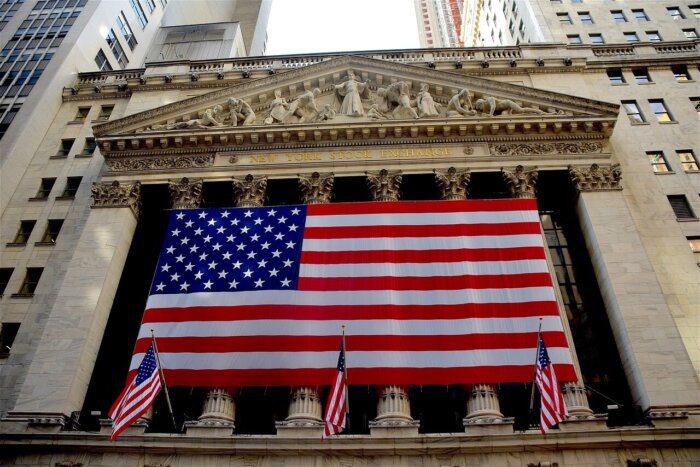
How to enjoy Wall Street and the Financial District?
Wall Street and the Financial District are in Lower Manhattan.
The easiest way to get there is by subway; the 2, 3, 4, 5, J, and Z trains all stop at Wall Street stations.
It’s best to visit during weekdays to feel the area’s energy, as weekends can be quieter.
Be aware of the security around the New York Stock Exchange and Federal Reserve.
Photography may be restricted in certain areas.
Include stops at the Charging Bull, Fearless Girl, and nearby 9/11 Memorial for a complete experience.
For a break, head to Battery Park for scenic views and a chance to relax.
Carrying a map or using a smartphone GPS helps in navigating the narrow streets.
This iconic district offers a blend of financial history, architectural grandeur, and poignant cultural landmarks.
World Trade Center area

Did you know…?
A lesser-known fact about the World Trade Center area is the existence of the Survivor Tree, an enduring symbol of resilience.
This Callery pear tree was discovered in the rubble of the 9/11 attacks, severely damaged but still alive.
Carefully nursed back to health, the tree was replanted at the 9/11 Memorial in 2010.
Today, it stands as a living reminder of perseverance and renewal amidst tragedy.
Visitors are often moved by its story, which adds a deeply personal and hopeful dimension to the memorial.
The Survivor Tree’s blossoms, particularly in spring, offer a poignant contrast to the somber reflections of the site.
Its presence inspires many, making a visit to the World Trade Center area not only a tribute to the past but also a testament to the enduring strength of the human spirit.
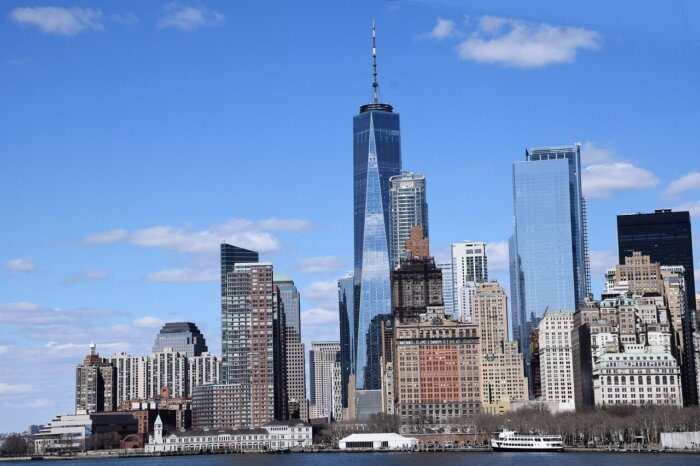
What is the World Trade Center area and why see it?
In the heart of Lower Manhattan, the World Trade Center area stands as a moving tribute to resilience and remembrance.
At its core is the 9/11 Memorial, where twin reflecting pools, set in the footprints of the original towers, solemnly honor the victims.
Around these pools, the names of those lost are inscribed, offering a space for contemplation and tribute.
Adjacent to the memorial, the 9/11 Museum delves into the tragic events, providing historical insights and personal stories.
Rising above this reflective space is One World Trade Center, also known as the Freedom Tower.
As the Western Hemisphere’s tallest building, it symbolizes hope and renewal.
The building’s observation deck offers breathtaking views of the city, allowing visitors to gaze out from a place of profound significance.
This combination of somber memory and soaring aspiration makes the World Trade Center area a uniquely profound visit, embodying the spirit of New York City.
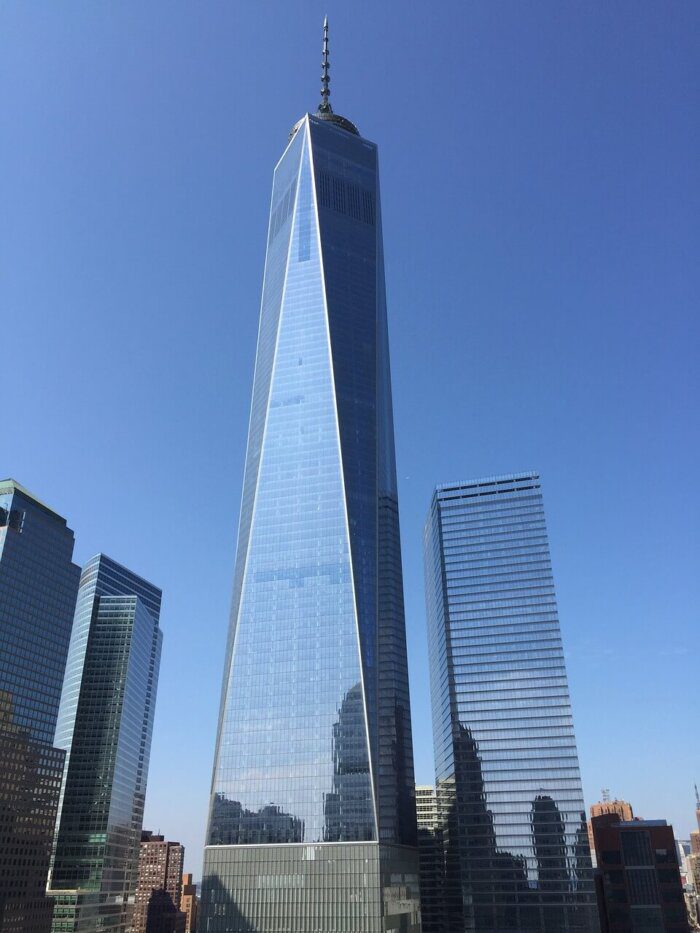
How to enjoy the World Trade Center area?
The World Trade Center area is in Lower Manhattan, near the southern tip of the island.
The easiest way to get there is by subway; the A, C, E, R, W, 1, 2, 3, 4, and 5 trains all stop at stations close to the site.
For visiting the 9/11 Memorial and Museum, consider buying tickets in advance, as they can sell out quickly.
Allocate enough time for a thoughtful visit, as the museum experience is extensive and moving.
The One World Observatory requires a separate ticket, often available for specific time slots.
Dress comfortably for walking, and be prepared for security screenings at the observatory.
Respect the solemn nature of the memorial site.
Remember, photography is allowed but should be discreet and respectful.
This area offers a profound experience, blending historical reflection with awe-inspiring views of the city’s resilience.
More information: One World Observatory website
Conclusion
New York City, an unparalleled urban wonderland, is a tapestry of unforgettable experiences.
From the soaring heights of the Empire State Building to the poignant depths of the World Trade Center area, each landmark tells a story of resilience and dreams.
Stroll through the lush pathways of Central Park, witness the dazzling lights of Times Square, and feel the pulse of history on Wall Street.
Delve into the rich cultural mosaics of Chinatown and Little Italy, and let the iconic Brooklyn Bridge connect you to new perspectives.
New York’s museums offer worlds of art and history, while Broadway’s stages capture the heart of the city’s artistic spirit.
This city, where every corner holds a new discovery, invites you to immerse yourself in its vibrant energy.
Come and experience the never-sleeping streets of the Big Apple, where every visit is not just a trip, but a journey through the essence of life and culture.
Happy travel
Marcin
My top places to see in New York City
- Broadway and Theater District
- Brooklyn Bridge
- Central Park
- Chinatown and Little Italy
- Empire State Building
- Grand Central Terminal
- New York City Museums
- Times Square
- Wall Street and the Financial District
- World Trade Center area
Useful links
New York City public transport website
Looking for more inspiration for places to visit?
The Best Of Europe: Top 10 Iconic Cities To Visit
The Best Of North America: Your Ultimate Guide To 10 Most Vibrant Cities

